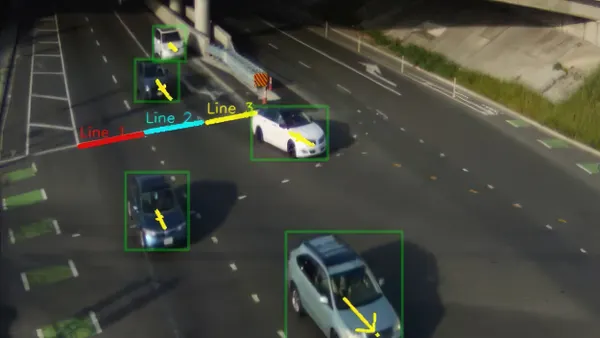San Diego is preparing new restrictions to limit the number of scooters in the city and where the devices can operate and park between rides. The city council's Active Transportation and Infrastructure Committee approved amendments to the city’s regulations last week, which are expected to be taken up by the full city council later this month, said Kelly Terry, senior public information officer for the city of San Diego.
The city issued a request for proposals in November 2021 and plans to award contracts to no more than four providers. Bird, Lime, Link, Lyft, Spin, VeoRide and Wheels are currently authorized to operate in San Diego under permits that expire at the end of July, Kelly confirmed.
The new contracts and proposed changes to the regulations seek to crack down on scooter and bike use on sidewalks, prevent the parking of scooters on sidewalks, limit scooter speeds and ensure compliance with the Americans with Disabilities Act.
“The issues with scooters in San Diego are the same that they have been from the very beginning in February of 2018 and that is the use of sidewalks for staging and parking and to a lesser degree for driving,” said Jonathan Freeman, founder of Safe Walkways, which advocates for the city of San Diego to address issues that create safety hazards for pedestrians.
According to the city’s Get it Done app, where citizens can report their concerns, there were 470 complaints involving shared mobility devices in April.
“The proposed amendments to the City’s Municipal Code for Shared Mobility Device (SMD) regulations are designed to strike a balance between scooters continuing to be a viable mobility option for many people, while at the same time mitigating some of the complaints from residents,” said Kristy Reeser, deputy director of the sustainability and mobility department for the City of San Diego, in an email statement.
To deter sidewalk usage, the RFP calls for geofencing technology along with “internal settings of the device” that ensure compliance with state law.
Bird announced sidewalk protection technology in collaboration with u-blox last year to tackle that very issue.
The proposed changes would also quadruple the fees for providers to $20,000 per year and 75 cents per day for each scooter. The number of permitted scooters will also decrease from 11,500 to 8,000, according to Kelly.
“We believe that the changes — such as limiting the total number of devices in use citywide to 8,000, prohibiting riding and parking on sidewalks, and shifting from a permit-based to a contractual model — will allow scooter and e-bike users to get around safely and enjoyably, while also respecting the concerns of non-users,” Reeser said.
San Diego's move comes as scooter usage is increasing following a downturn in 2020 and 2021, which saw the number of devices deployed per day drop from 9,000 in October 2019 to just 3,000 by September 2020. According to Kelly, 6,000 to 7,000 devices are now deployed across the city on most days.
Many other cities also continue to grapple with the challenges presented by the proliferation of micromobility devices. Last year, Milwaukee blocked scooters from starting trips in the downtown area after it found that 30% of riders used the sidewalk. Earlier this year, Miami imposed a helmet mandate for scooter riders and restricted speeds to 15 mph on streets and 7 mph on sidewalks. Last month, Cincinnati ordered scooters to be locked down from 6:00 p.m. to 6:00 a.m.
Alex Engel, spokesman for the National Association of City Transportation Officials, said in an email that more cities are moving to a partnership-based model for regulating and managing shared micromobility devices. “With fewer companies operating, it is more feasible to create mutually beneficial (to residents and companies alike) provisions around parking, equitable scooter and bike distribution, and a number of scooters that allows for ease of use while avoiding clutter in the right of way,” he said.











